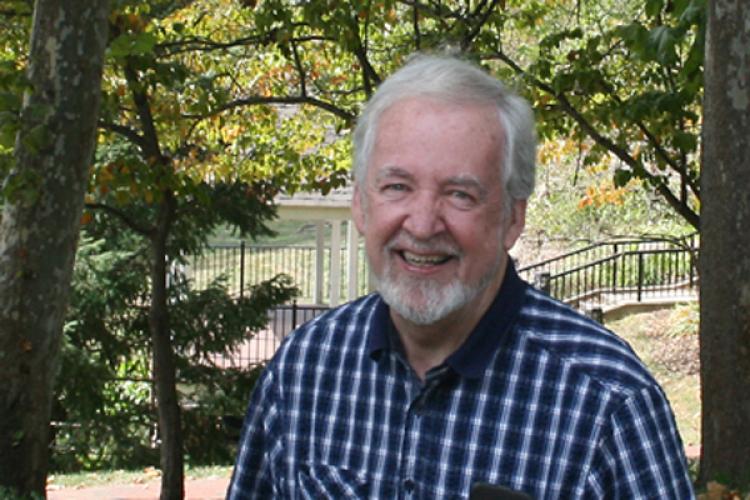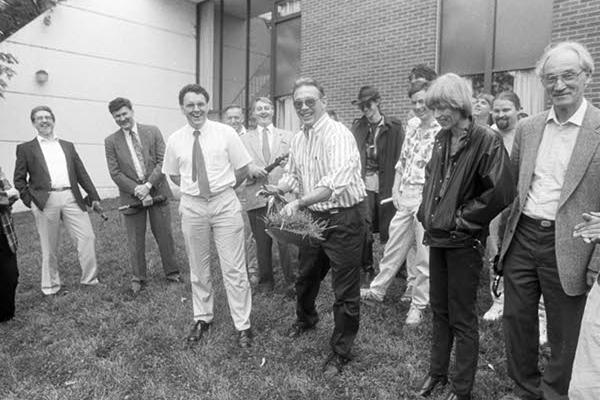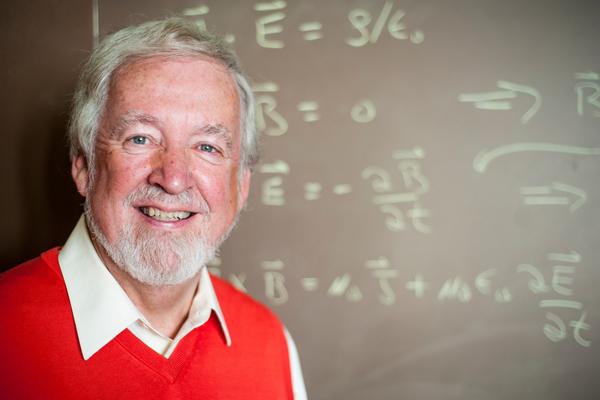
University community mourns Physics Professor Emeritus Louis Wright

The Ohio University community mourns the passing of Physics Professor Emeritus Louis Wright on Feb. 7 at the age of 82.
Wright was a nuclear theorist who was instrumental in building OHIO's Physics and Astronomy Department in the College of Arts and Sciences, including its robust research mission.
"Louis Wright took on President Charlie Ping’s vision that Ohio University could excel at the international level in research and education in some specific areas. Louis made it possible for this department to do that and reach recognition in the state that previously only OSU achieved, and sometimes we would exceed them. He left a solid foundation that Joe Shields, I and now Eric (Stinaff) could build on," said David Ingram, professor and former department chair.
Wright helped lead the department through a period of generational transition and smart growth. His guidelines were "educate yourself in other research areas, respect your colleagues and stay optimistic," according to his obituary.
"Louis left an incredibly positive and enduring legacy on the department and I was honored to know him," said Stinaff, physics professor and department chair. "Louis joined Ohio University in 1970 and in addition to his many research accomplishments, he was a strong leader and supporter of faculty and faculty governance. Louis served as chair of the Department of Physics and Astronomy from 1990-97 and 1999-2005. During the period from 1989-90 until 2004-05 the number of full-time faculty increased from 18-27 and external grants increased from $728,000 to $3.2 million per year. His legacy is still felt today and an example of the positive impact he personally had on so many," Stinaff said.
"Louis was far-sighted. Many of his decisions had long-term positive impacts on the department and university. He is the most effective chair I have seen anywhere," said Distinguished Professor of Physics David Drabold. "He hired me, I still remember sitting in my office at Illinois and getting the call from him."

In the 1980s, Wright, along with Ron Cappelletti from physics and Paul Sullivan from chemistry, created an interdisciplinary Condensed Matter and Surface Science program, with members from physics and astronomy and chemistry and biochemistry in the College of Arts and Sciences and the departments of electrical, mechanical and chemical engineering in the Russ College of Engineering and Technology.
A decade later, Wright would join with the department's first experimental nuclear physicist, Roger Finlay, to create the Institute of Nuclear and Particle Physics (INPP), bringing together diverse nuclear and particle physics activities in the department and coordinating the activities of both theoretical and experimental subatomic physicists. This was also the decade when the department expanded its graduate program to include M.S. and Ph.D. degrees based on research in applied nuclear physics. Recently, the CMSS program merged into the Nanoscale and Quantum Phenomena Institute (NQPI).
"As department chair, Louis was a motivator and championed jumping on new opportunities for the Physics and Astronomy Department. He was very fair and believed in promoting all sectors of the department. He had a wide-ranging knowledge of the university and understood how to maximize successes for the greatest impact. I really enjoyed working with Louis," said Professor Art Smith.
"Louis welcomed me to my new job immediately, his desktop was running the latest/greatest UNIX system I had ever seen (NeXt), cutting edge at the time. He always took the time to make sure things were understood. Godspeed, my friend," said Systems Administrator Donald Roth.
Wright also served 18 years on Faculty Senate, including a two-year term as a chair.

Championing the Physics and Astronomy Department
Wright, who earned his Ph.D. in Physics at Duke University, became a prolific researcher and a beloved teacher at OHIO—and the department's biggest advocate.
Wright described inviting alumnus Venki Ramakrishnan back to campus—well before Ramakrishnan won a Nobel Prize for deciphering the secrets of the ribosome:
I also kept my eyes open for opportunities to build the department’s reputation. I happened to see an article in Science one day. It was written by a Ph.D. of ours that had switched into molecular structure in biology. His name was Venki Ramakrishnan. I realized it was an important result, so I nominated him for outstanding alumni from the College of Arts and Sciences. After some hassle, he got it. He showed up two to three years later and gave a very nice colloquium attended by faculty and students from several departments. Two years after that, he got the Nobel Prize in Chemistry.
Ramakrishnan recalled, "He was a very nice person, and struck me as an old-fashioned gentleman with his courtesy. It was he who reconnected me with the department and was behind inviting me in 2008 (pre-Nobel) for a distinguished alumnus award."
Why did Wright study physics?
He answered this and other questions in Professor Emeritus Louis Wright Reflects on a Successful Career in Physics:
I was born in 1940 and graduated from high school in ’58. When I was about 12 years old, I started reading science fiction and noticed that all the smart guys tended to be physicists. Although I didn’t know exactly what physics was, I decided I wanted to be a physicist. So when I went to LSU (Louisiana State University) in 1958, I majored in physics. Since LSU had a department of physics and astronomy, I took a lot of astronomy classes. I’ve always had sort of an amateur interest in astronomy although I’ve never looked through a telescope.
My father suggested I major in engineering, which had more obvious job prospects, but when I looked at the curriculum and saw how rigid it was, I opted for physics where I had many more electives.
Of course Sputnik happened at that time. A lot of resources flowed into physics, and it was an exciting period. I also studied Russian for two years because it looked important in those days. Physics was exciting, and I went off to graduate school in ‘61 at Duke University and graduated with a Ph.D. in ‘66. There was a concerted effort to get people into the sciences, and I was ready to start my career as a physicist.
Those interested in making a gift in memory of Wright and providing support for unusual expenses for physics and astronomy graduate students, such as emergency funds, travel funds, special appointments, and awards can contribute to the Breitenberger/Wright Graduate Endowment Fund, established by Professors Ernst Breitenberger and Louis Wright.
